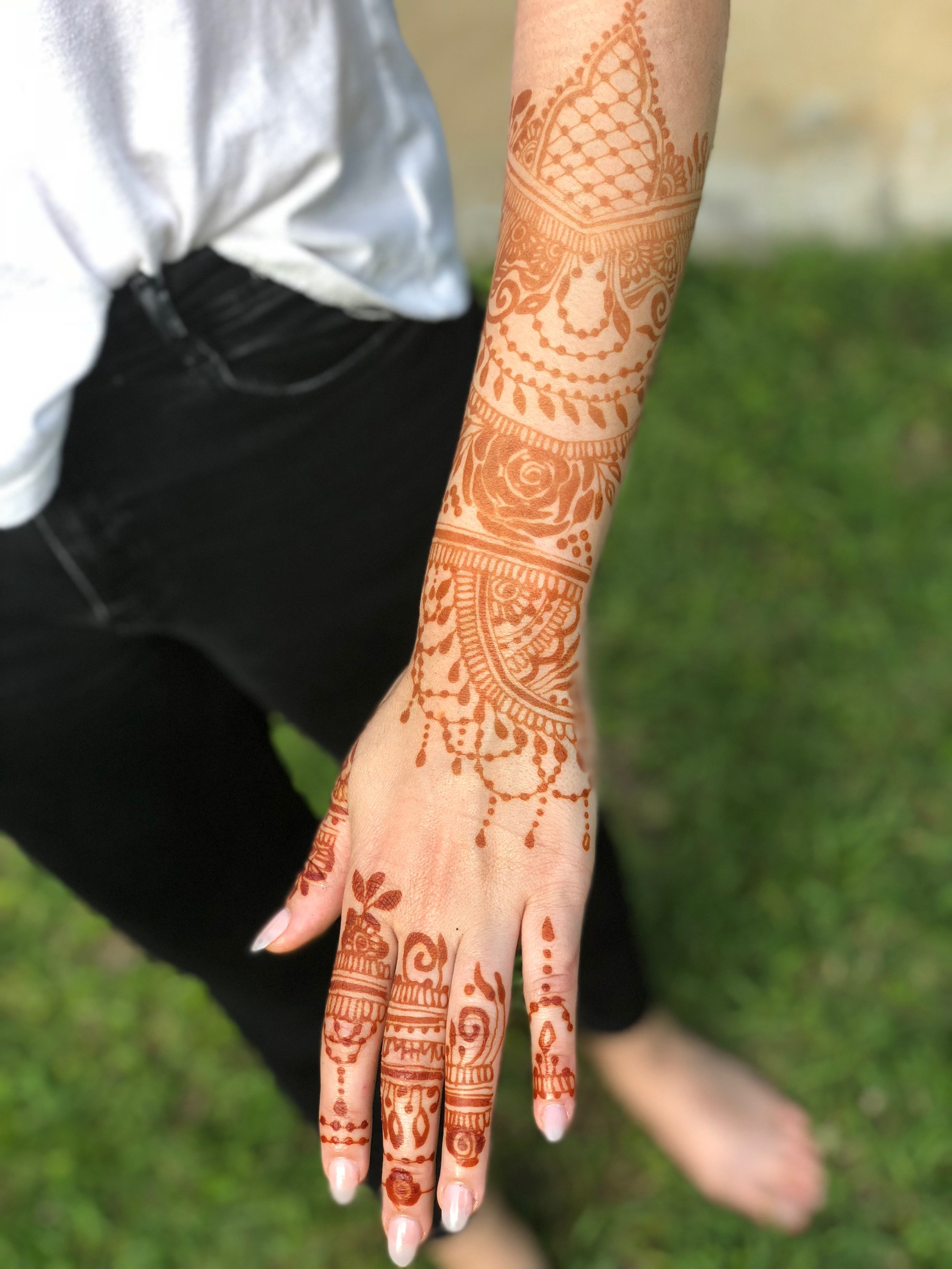Natural Henna: All the Goodness You Need to Know 🌿✨
Hey babes! 💕 If you’re thinking about booking a Natural Henna session with us, this post is your go-to guide. We want you to feel super confident about what to expect, how to care for your gorgeous new design, and why natural henna is so special. Ready? Let’s dive in! 🚀
Why Natural Henna?
🌱 You want that authentic, traditional henna experience.
💖 You’ve got sensitive skin and want something gentle and natural.
⏳ You want your henna to dry quickly (about 20 minutes).
💸 You want to get more henna for your budget and coverage.
Heads Up! What to Know Before You Book ⚠️
We recommend booking 2-3 days before your event so your stain has time to develop and look amazing.
Natural henna stains last about 1 to 2.5 weeks depending on your aftercare and where you put it (palms and feet get the darkest).
🚿 Avoid water for 12–24 hours after the paste comes off to let your stain fully mature.
Available for an extra fee during booking, you can seal your design with lemon-sugar juice or medical tape to help the stain get darker and last longer!
🌿 Our paste is made fresh with the best ingredients: Henna powder, water, sugar, and essential oils like Tea Tree, Cajeput, and Lavender.
What to Expect with Your Stain 🎨
🧡 Right after application, your paste will look bright orange. Give it 2–3 days and voilà — it deepens to a rich, burgundy-brown stain.
The longer you keep the paste on (ideally 12+ hours), the deeper and darker your stain will be!
Heat is your henna’s BFF — stay warm or catch some sun to help the color pop.
After your paste flakes off, moisturize with coconut or olive oil to keep that stain fresh and vibrant.
Before Your Appointment 🧼
Shave or remove hair on the area 24hrs before your appointment, for a smooth, flawless henna application.
Cleanse and gently exfoliate skin 24hrs before so the henna can stick well, and the skin isn’t as sensitive.
Wear comfy and design appropriate clothes that won’t rub your fresh design the moment you leave!
Aftercare 101 💧
Your design will take about 15–45 minutes to dry depending on size — be patient!
⚠️ The longer it’s on the skin, the darker the stain; the longer you avoid water after removal, the longer it will last.
Keep that paste on for as long as possible (8–12+ hours rocks!) for the best stain.
🚫 No water for 12–24 hours after scraping the paste off — trust us, your stain will thank you.
Skip the hand sanitizer and harsh soaps — they dry your skin and fade your henna faster. Gloves are your friend when doing chores!
a. Fresh Henna stain after paste has been left on 19 hours.
b. Henna stain 36 hours after paste removal.
c. Diagram showcasing the stain on the body.
A Little Henna History & Fun Facts 📜
Henna has been used for centuries across Asia, North Africa, and the Middle East. It’s a plant that contains lawsone, a natural dye that stains skin and hair — pretty magical, huh? Henna has been a part of weddings, celebrations, rites of passage, and even acted as a natural cooling agent. We keep things simple and safe with our all-natural paste recipe that honors these traditions with a modern twist.
Which Henna Style Speaks to You? 🎨
🇮🇳 Indian Bridal Mehndi: Dense, detailed designs full of nature, symbols, and stories.
🌸 Arabic/Gulf: Floral, flowing, and full of space to breathe.
🎭 Indo-Arabic Fusion: The best of both worlds — detailed but airy.
🌿 Pakistani: Mandalas, florals, and lots of lovely leaf motifs.
💎 West-Indie Fusion: Jewelry-inspired boldness with Bollywood flair.
🏜️ Moroccan: Geometric and tribal, often done with a syringe for sharp lines.
✨ Eastern European: Large peonies, thick + thin lines, chandelier affect— detailed but airy all throughout.
Booking & Policies — Keeping it Smooth 📅✨
📆 Book at least 2-3 days before your event to give your natural henna time to develop its beautiful stain.
💵 Deposits secure your spot — heads up, they’re non-refundable if you cancel less than 72 hours before your appointment.
⏰ We love being flexible and working with you, but please respect our time — late arrivals and no-shows have policies to keep things fair for everyone.
🔄 Need to reschedule? Just give us at least 24 hours’ notice so we can adjust.
⏳ We allow a 10-minute grace period; after that, a 25% late fee kicks in.
🤝 Life happens! As long as you communicate, we’ll do our best to work with you.
⚠️ We guarantee fresh natural henna paste, but the final stain depends on your skin and aftercare. We’re not liable for individual differences.
🔒 All sales are final.



